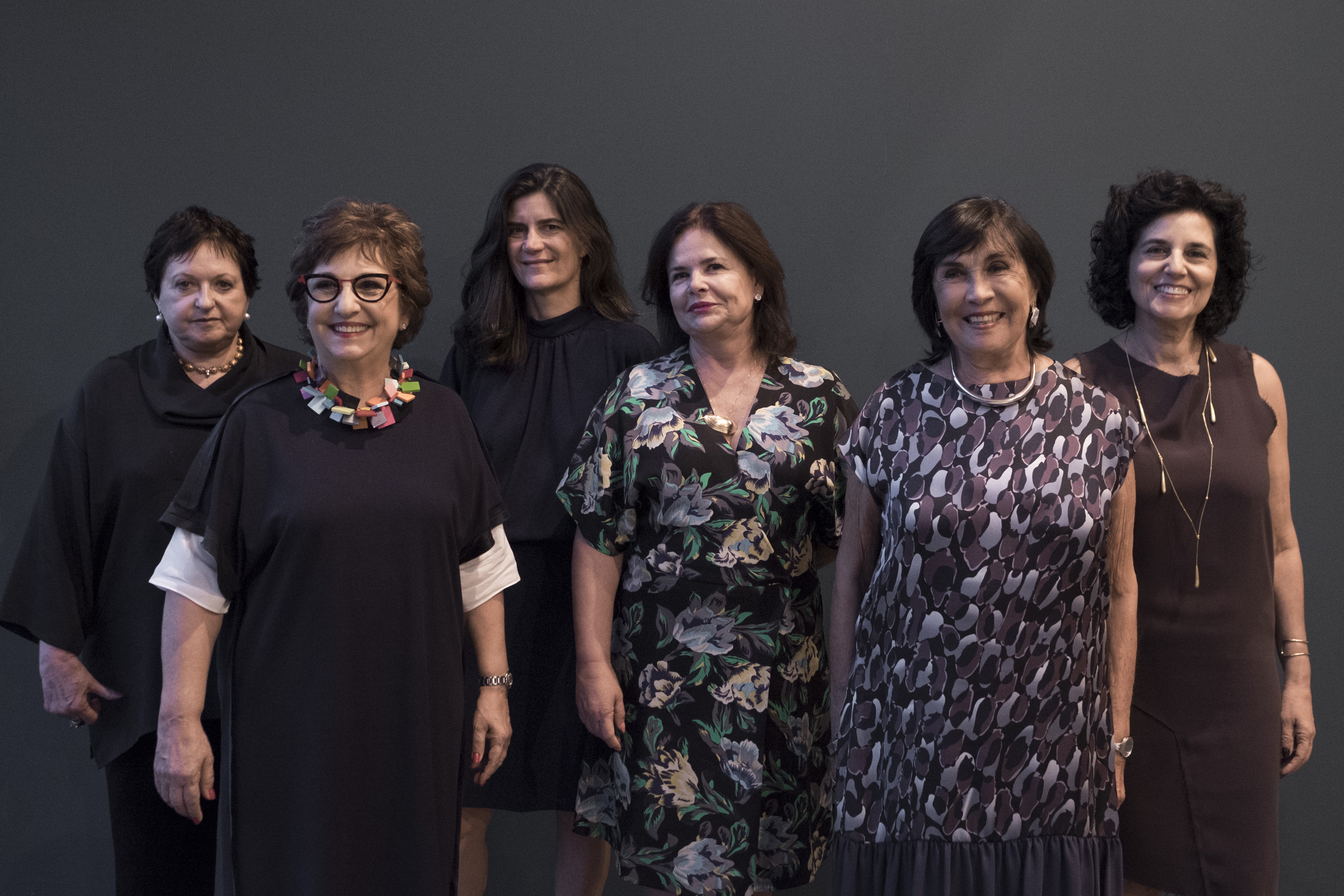
South America’s most important art fair, SP-Arte, took over São Paulo’s iconic Oscar Niemeyer-designed Biennial Pavilion for the fourteenth time last week. With 132 galleries, a full schedule of programming, and two frenzied days of VIP previews, the fair is both an essential stop for the preternaturally chic Paulista elite as well as the most vital week of the year for the Brazilian art market.
Behind the festivities is a small group of gallerists who have built the foundation upon which the entire scene is built. Raquel Arnaud, Luisa Strina, Nara Roesler, Marilia Razuk, Vilma Eid, Márcia Fortes, and Luciana Brito were the pioneers of contemporary art in Brazil long before the world was looking. Bringing them all under the same modernist roof for the fair is the work of Fernanda Feitosa who founded SP-Arte in 2005 and continues as the sole owner.
The women, despite their indisputable role as the most established gallerists in São Paulo, see little of note about their success. They point out that there are important women gallerists all over the world and mention the late Thomas Cohn, a fellow dealer who represented such figures as Adriana Varejão and Beatriz Milhazes, and Marcantônio Vilaça, who was an international face of Brazilian art before his death in 2000. “I’m not sure I see it as a big deal,” says Feitosa, of the prevalence of female gallerists. “I once heard someone saying that back in the fifties it was acceptable for a woman to own a gallery. It wasn’t a man’s activity because it doesn’t necessarily provide the resources to sustain a family. I don’t know if it’s true, but maybe in the past it was perceived more as a hobby than a career.”
Luisa Strina counts Olafur Eliasson, Aldredo Jaar, and the late, beloved Neoconcrete icon Lygia Pape, among the artists she deals with. “When I started in 1974 there were no galleries like we have today,” she says. “I was the first to represent artists and work directly with them. I didn’t want to open a gallery, but the artists I was working with said that if I didn’t, they would work with someone else.” At the time Brazil was ruled by a military dictatorship, which meant that art could be neither imported, nor exported. “In 1985 we opened the ports; in 1988 I participated in Art Cologne; and in 1990 I went to Art Basel. That was the beginning of the export of Brazilian art,” she explains. Being a woman wasn’t a challenge, according to Strina. “The men helped me. We were a group of people in it together and we would help each other.”
Raquel Arnaud, who opened her gallery 45 years ago, explains that it was a natural step for her, after working at the Museu de Arte de São Paulo. Now representing the estate of Sergio Camargo as well as artists Carlos Cruz Diez and Waltércio Caldas, she focuses exclusively on geometric art. “I think it’s just a coincidence,” she says when asked about why this group of historical gallerists is all women.
Luciana Brito got her start in the gallery world working for Arnaud, before partnering with Fábio Cimino to open a space in 1997. Cimino left in 2008, and since then Brito’s daughter, Julia, has stepped in to help run the gallery, which represents Caio Reisewitz, Regina Silveira, and Marina Abramovic. “I’m so happy to have been a part of all these changes,” says Brito. “Since I started my career and opened the gallery, the entire art scene has professionalized—not just the galleries and the market, but also the museums and the publications.”
When asked who is leading the charge for the next generation, Brito mentions Central Gallery owner Fernanda Resstom, Maria Montero from Sé Gallery, and Jacqueline Martins—whose name came up again and again throughout the fair as the next Brazilian gallery to watch. “It’s not easy,” says Brito. “This has taken us many years to achieve.”



